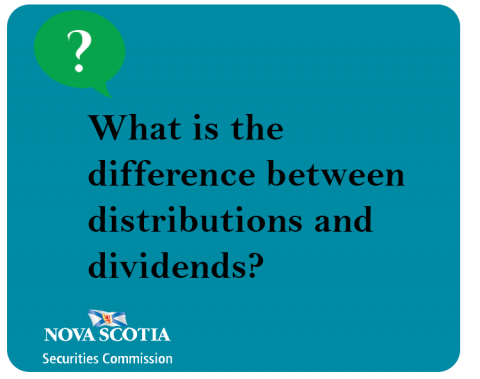Submitted by nsscadmin on

Both distributions and dividends are typically cash payments made to investors. Where they differ is where they come from.
As we’ve written in previous blog posts dividends are paid to shareholders who invest in equities. Dividend payouts depend on the profits of the company. Companies are not obligated to pay their shareholders dividends and can choose to use their profits for other company purposes. This could include paying down debt, or growing the business through investments in new infrastructure or machinery, employees, etc. Larger companies often payout consistent dividends to try and attract investors, while smaller companies often prefer to avoid paying dividends and instead re-invest their profits into growing the company.
If you invest in mutual funds or ETFs you may receive distribution payments when the fund does well. A mutual fund or ETF is a pool of investments that can include shares in numerous companies. When these companies pay a dividend, the mutual fund distributes it to everyone invested in the fund or ETF. Since mutual funds or ETFs can also invest in other investments, such as bonds and derivatives they can also make money from their earnings through dividends, interest and capital gains. These types of return on investments may be distributed to everyone invested in the fund. These distributions can be paid to an investor in cash, or they can be used to automatically purchase more units in the fund.
If you hold a mutual fund, ETFs or equities in an RRSP or a TFSA account, your dividends and distributions grow tax free until you withdraw them. If you invest outside one of these registered accounts your dividends and distributions are subject to tax. Make sure you know how much and how to declare them on your tax returns. Where your dividends and distributions come from (foreign investment for example) can affect your tax rate. Consult a tax accountant to make sure you know what taxes you owe.
